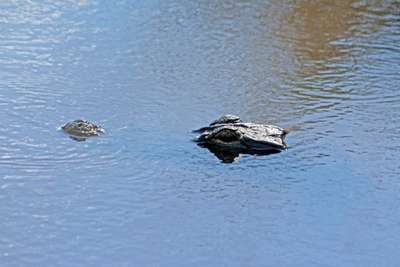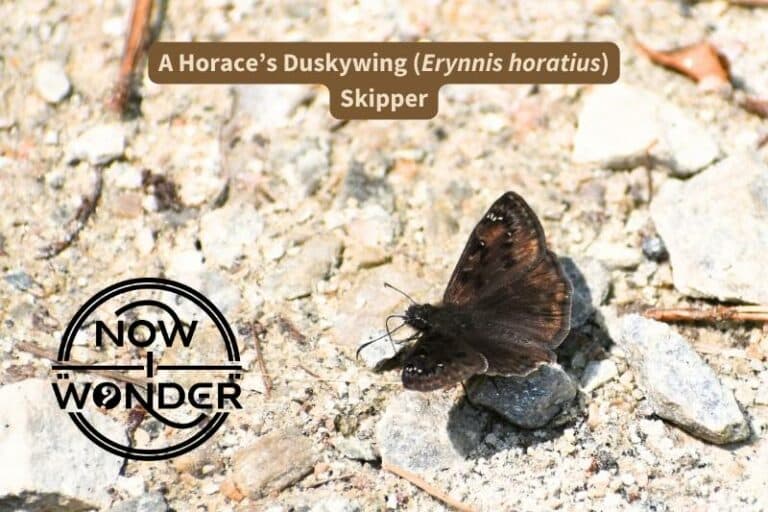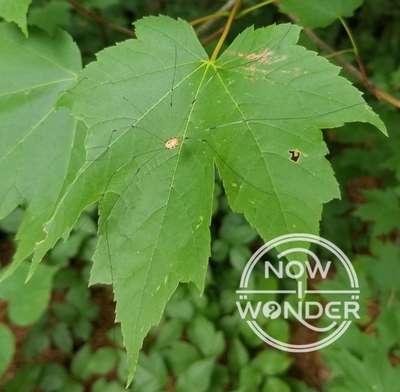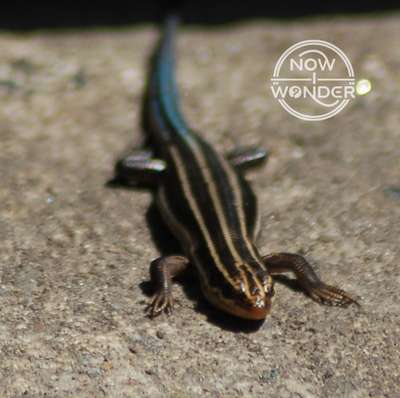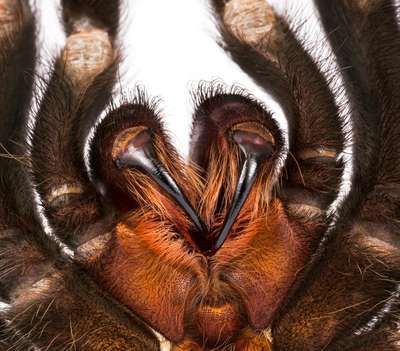Pearl Crescents (Phyciodes tharos) are small, orange and black North Carolina butterflies. They like to perch on the ground or in low vegetation with their wings outstretched. Males fly patrols through their territories searching for females. They often dart out to investigate passing humans.
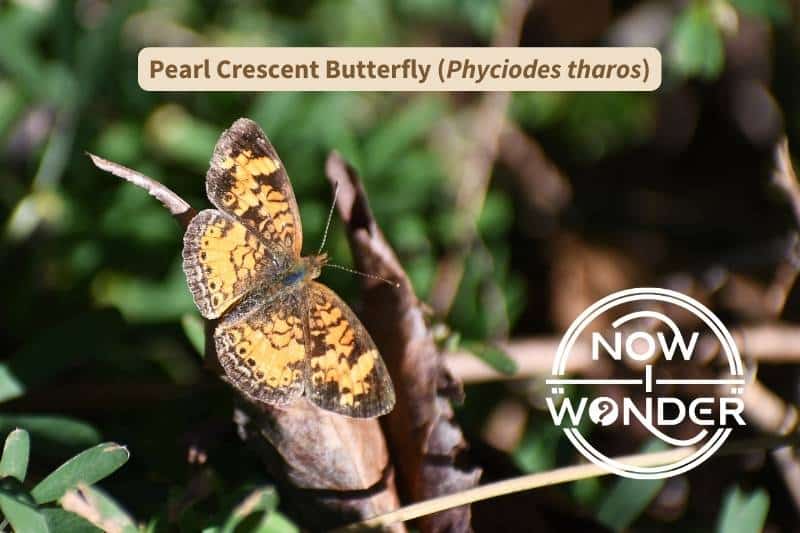
Fun Facts About Pearl Crescent Butterflies To Wow Your Friends
My absolute favorite thing to do after I identify a butterfly is to learn everything I can about it.
Every species on earth is unique and has its own quirks, hidden talents, enemies, and friends. I call these special tidbits “fun facts” because that’s what they are to me.
Here are a few fun facts about Pearl Crescent butterflies that I hope you enjoy too!
- The Pearl Crescent (Phyciodes tharos) is the most abundant and widespread crescent butterfly (Daniels, 2003).
- There are four other crescent species found in the Carolinas. They are the Northern Crescent (P. selenis), Phaon Crescent (P. phaon), Tawny Crescent (P. batesii), and Texan Crescent (P. texana).
- The Tawny Crescent and Texan Crescent live in North Carolina. But both live only in very small parts of the state.
- The other two species only visit or stray into North Carolina.
- Pearl Crescent butterflies breed any time temperatures are warm enough. This means that the North Carolina population renews itself over the entire summer.
- Male Pearl Crescent butterflies are notorious for patrolling territory.
- They will dart out to investigate anything that moves, including people.
- Only the butterflies know whether they are being curious or pugnacious. But the behavior makes for a fun interaction for amateur naturalists.
- Pearl Crescent butterflies are “brush-foot” butterflies. Butterflies in this family have very small front legs, which aren’t used for walking.
- When seen from the side, Pearl Crescents look like they have only four legs, instead of the expected six.
- “Crescent butterflies” are also sometimes called “crescent spot butterflies” (Pyle, 1981).
- They get their name from a crescent-shaped spot on the underside of their hindwings.
But fun facts are a whole lot more fun when you get to see the actual animal in real life. So read on to find out where, when, and how to find Pearl Crescent butterflies, and how to make sure you’re looking at the animal you think you are. You’ll be so glad you did!
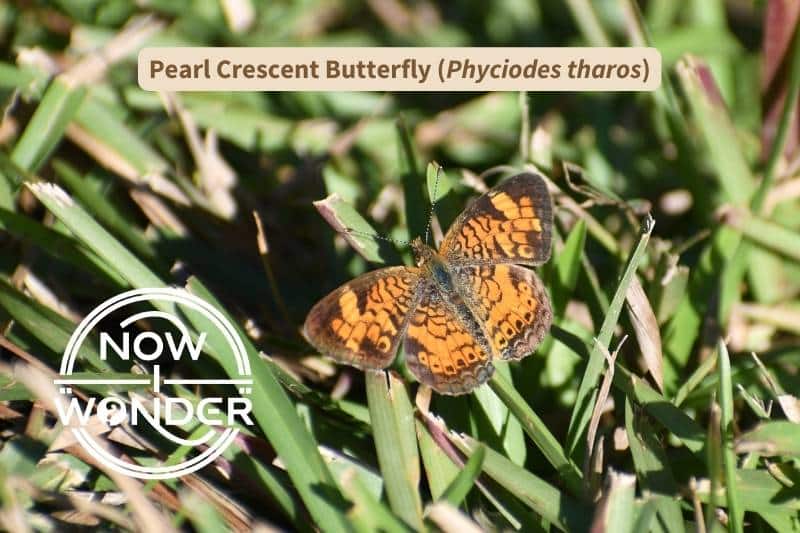
How Are Pearl Crescent Butterflies Classified?
| Kingdom | Animalia |
| Phylum | Arthropoda |
| Class | Insecta |
| Order | Lepidoptera |
| Family | Nymphalidae (“brush-foot butterflies”, subfamily Nymphalinae, “true brush-foots”) |
| Genus species | Phyciodes thanos |
How Do I Know I’m Looking At A Pearl Crescent?
Appearance of Pearl Crescent Butterfly Eggs
You’ll know you’re looking at Pearl Crescent butterfly eggs when you find clusters of small green eggs stuck to the undersides of Aster plant leaves. Female Pearl Crescent butterflies lay their eggs in clusters of 20-300 eggs (Wagner, 2005).
Appearance of Pearl Crescent Butterfly Caterpillars / Larvae
You’ll know you’re looking at Pearl Crescent caterpillars when you find a small, dark brown caterpillar covered with small, bristly knobs.
Pearl Crescent caterpillars grow up to 0.8 inches (2cm) long. Their bodies are dark brown to dark gray, speckled with white. Broken white stripes run down their backs and along their sides. Rows of short, plump “setal warts” sprout from their bodies (Wagner, 2005). Each “wart” bristles with short, dark spines.
Their heads are black with white stripes.

Chrysalids are mottled, and grayish yellow or brown (Pyle, 1981).
Appearance of Adult Pearl Crescent Butterflies
You’ll know you’re looking at a Pearl Crescent butterfly when you spot a small, orange and black butterfly that perches with flat wings outstretched.
Pearl Crescent butterflies grow to about 1.6 inch (4.1 cm) and their appearance varies by time of year. Spring and fall seasons are cool and wet compared to high summer in North Carolina. Individuals that mature in the spring and fall are darker than summer adults. The undersides of spring and fall butterflies have bolder patterning than summer ones.
Pearl Crescent butterflies have dusty-looking dark brown bodies and black and white-striped antennae. The clubs of their antennae are usually black.
Their rounded wings are black and orange when seen from above. The wings of both sexes are orange, interrupted by black lines and patches. Males are usually brighter orange and have thinner black lines than females. The forewings and hindwings of both sexes have wide black borders. Several black spots decorate the orange at the bottom of their hind wings.
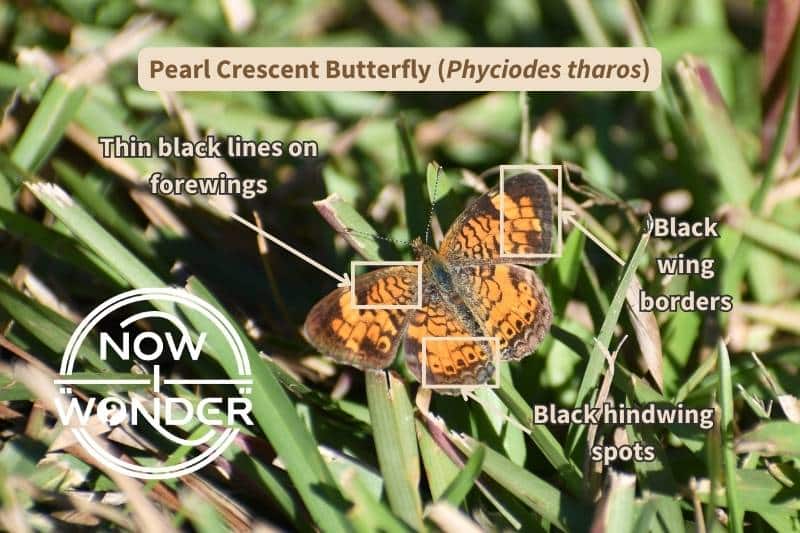
The underside of their wings are yellowish-orange. Light brown lines and several cream-colored patches break up the color. Their hind wings have a purplish-brown patch that contains a pale crescent wing spot.
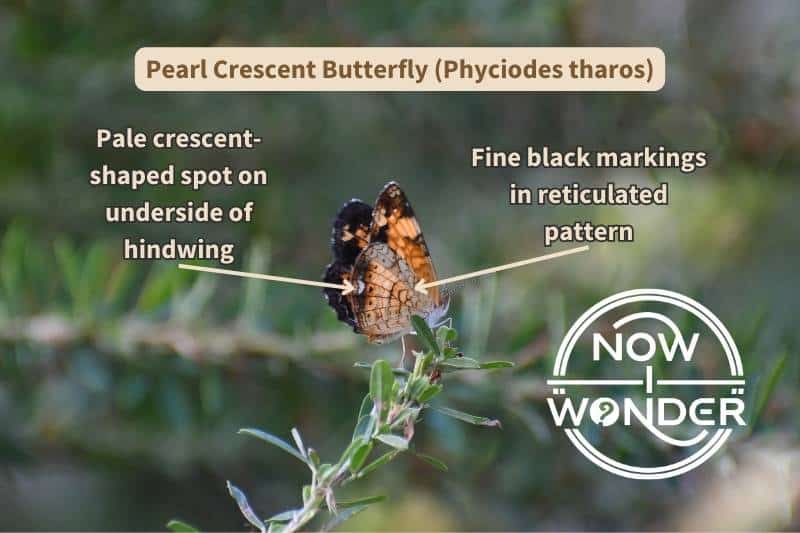
The Pearl Crescent (Phyciodes tharos) is the most abundant and widespread crescent butterfly (Daniels, 2003). There are four other crescent species found in the Carolinas. Two live only in very small portions of the state, and the other two only visit or stray into North Carolina. If you see a small orange and black crescent butterfly in North Carolina, it is likely a Pearl Crescent.
When Can I Find Pearl Crescent Butterflies In North Carolina?
Look for Pearl Crescent butterflies in North Carolina anytime between late March and early November.
These butterflies live throughout the state. They are common in any open, sunny areas where flowers grow. They breed any time conditions are good enough. So sometimes, random adults even fly during warm winter periods.
Pearl Crescent caterpillars grow through three “instars”. An “instar” is a stage of insect development between molts. Caterpillars are eating machines and grow rapidly. They have to shed their skins every once in a while to accommodate their increasing body size.
The first instar of a Pearl Crescent caterpillar is between hatching and its first molt. The second instar is between the first molt and the second molt. The third instar is from the last molt until the caterpillar pupates.
The third instar caterpillars overwinter. These are the last caterpillars that hatch in the fall (Pyle, 1981). Once spring temperatures rise high enough, the caterpillars rouse and finish growing. Then they spin chrysalids and emerge as adult butterflies. These butterflies become the first generation of the North Carolina summer.
Where Should I Look To Find Pearl Crescent Butterflies In North Carolina
Pearl Crescent butterflies are widespread through the state and abundant. They are relatively easy to encounter in the wild.
Look for Pearl Crescents along roadsides and forest edges, and in meadows. Males like to gather on moist ground to “puddle” and drink dissolved minerals.
Male Pearl Crescent butterflies also like to perch on low vegetation. They rest with their wings stretched out to the side. Their orange and black wings stand out against green plants and make them easy to spot.
Males fly out regularly to search for females. Pearl Crescent butterflies fly rapidly but meander, and rarely fly very high. They fly in a combination of flaps and flat-winged glides.
Pearl Crescent males are notorious for flying out to investigate movement (Pyle, 1981). If a butterfly start flitting around you, try to get a closer look. It may be a scrappy male Pearl Crescent butterfly determined to defend his territory. But whatever you do, don’t try to swat them away. Butterflies are harmless to humans and there is no need to scare or injure them.
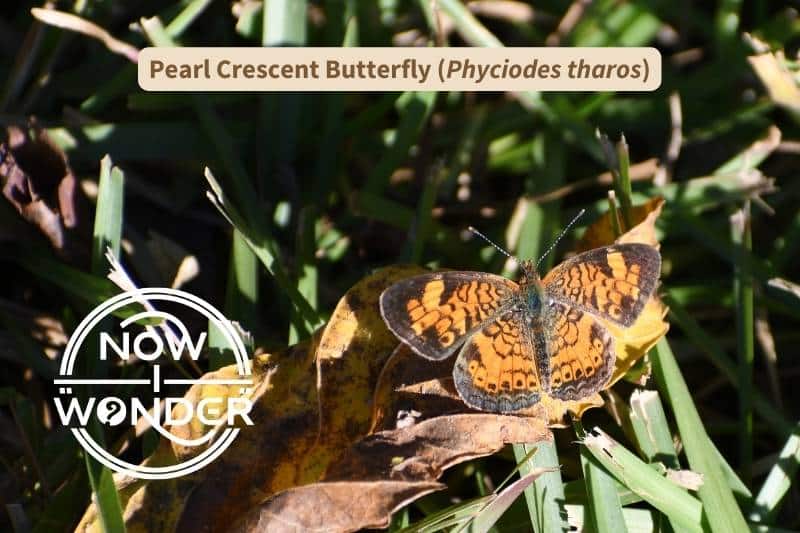
Pearl Crescent caterpillars are hard to find in the wild. Unlike some species, Pearl Crescent caterpillars are solitary. They don’t form nests or leaf structures in which to hide. Look for them underneath the leaves of Aster plants, like Yarrow (Achillea millefolium), Common Dandelion (Taraxacum officinale), and Boneset (Eupatorium perfoliatum).
I’ve never had any luck finding one myself, but still hold out hope. Someday, I will flip over a leaf on a Yarrow plant (Achillea millefolium) and a bristly little Pearl Crescent caterpillar will surprise me.
What Do Pearl Crescent Butterflies Eat?
Pearl Crescent Butterfly Larval Food Plants
Pearl Crescent caterpillars eat plants in the Aster family Asteraceae. Wild North Carolina plants in this very large family include Chicory (Cichorium intybus), Yarrow (Achillea millefolium), and Common Dandelion (Taraxacum officinale).
Pearl Crescent Butterfly Adult Food
Adult butterflies sip nectar from a variety of flowers. They especially like nectar from composite flowers like asters, fleabanes, and thistles (Pyle, 1981).
References
Daniels, Jaret C., 2003. Butterflies of the Carolinas. Cambridge, MN: Adventure Publications Inc.
Pyle, Robert Michael, 1981. National Audubon Society Field Guide to Butterflies. New York, NY: Alfred A. Knopf.
Wagner, David L., 2005. Princeton Field Guides: Caterpillars of North America. Princeton, NJ: Princeton University Press.

